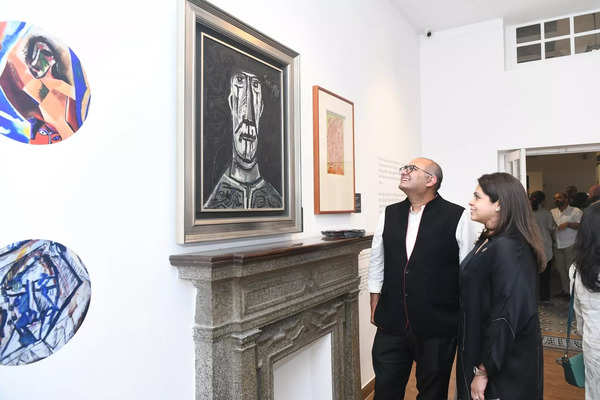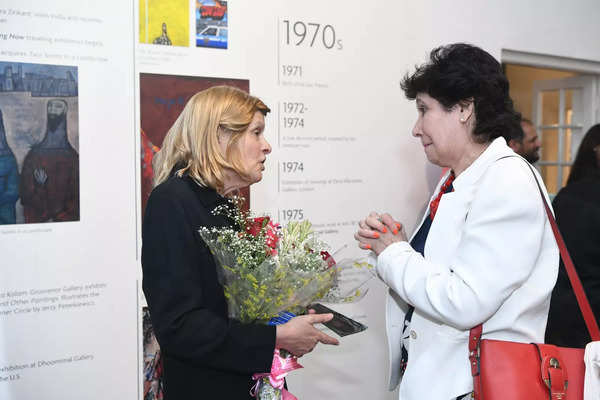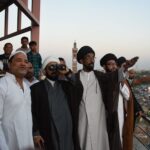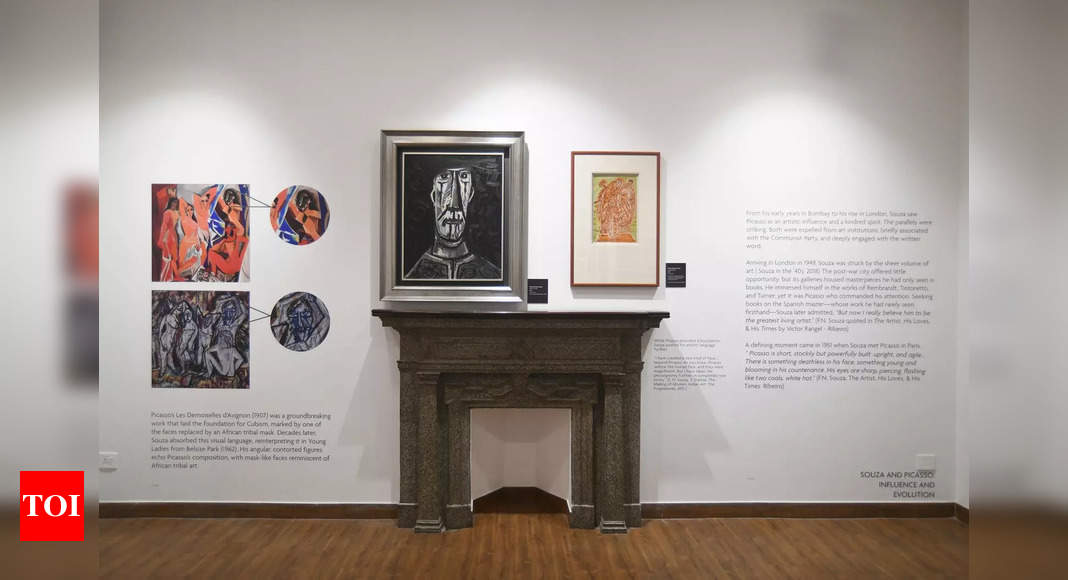F.N. Souza, modern Indian art’s “Enfant Terrible,” was bold, volatile, and unflinching in his critique of the world. Yet beyond this label lay a doting father and an artist shaped as much by love and loss as by resistance and rebellion.
Delhi’s Dhoomimal Gallery, with research by Prinseps, presented the exhibition F.N. Souza: A Continuum on March 25, 2025 at the gallery. This exhibition offered an intimate portrait of an artist often defined by sharp lines, exploring not just how he painted, but why—along with the influences that shaped his artistic vision.
At the heart of this exhibition was his relationship with Liselotte Souza, a Czech-Jewish actress he met in London in 1954. Their partnership—both deeply personal and intellectual—coincided with one of the most successful decades of his career. Through Liselotte, Souza entered new artistic, literary, and theatrical circles, expanding his creative vision in ways that would leave a lasting mark on his work.
In the words of Uday Jain, Director of Dhoomimal Gallery, “Together with Prinseps we were thrilled to present F.N. Souza: A Continuum that not only showed Souza’s techniques and methods but also his artistic journey.”

Uday Jain, Director of Dhoomimal Gallery, with Sunaina Jain at F.N. Souza A Continuum
Beyond his artistic explorations, this exhibition shedded light on a more intimate facet of Souza’s legacy—his role as a father. Archival materials, including letters, a rare voice recording and video snippets, reveal moments of warmth and tenderness, offering a poignant contrast to his rebellious public persona.
Alongside Souza’s works, the exhibition explored his enduring family legacy through the art of Keren SouzaKohn, daughter of Liselotte and F.N. Souza, her son Solomon Souza, and her nephew Ruben Souza; each carrying forward aspects of Souza’s vision in their own way.

Artist Keren Souzakohn (L), daughter of Souza at F.N. Souza A Continuum
This exhibition unveiled Souza’s many layers—the iconoclast, the lover, the father, and the writer—through personal recollections and creative influences. From Goa’s red roads to the far reaches of the world, his journey was one of constant evolution, shaped by the lands he inhabited, the loves he embraced, and the fusion of his personal and artistic worlds.
Souza’s work also reflected his inner world, particularly his existential concerns. Kafka’s The Metamorphosis (1915) resonated deeply with Souza, who described his origins as “a maggot on a dung heap,” mirroring the novel’s protagonist’s unsettling transformation. This preoccupation with identity and exile grew more pronounced in works like Nude Metamorphosed Into Insect (1957). His early exposure to Bombay’s Jewish artistic circles—including Walter Langhammer, Emmanuel Schlesinger, and Rudy Von Leyden—further shaped his artistic and intellectual development.

Indrajit Chatterjee, Director at Theatre & Television Associates, Nissar Allana with Indian theratre director and Scenic Designer Amal Allana
The landscapes of his work also shifted—from the red roads of Goa’s Saligao to the streets of Hampstead and Belsize Park, where he lived with Liselotte. His urban settings took on an almost apocalyptic quality, interpreted by some as reflections of Cold War anxieties and by others as deeply personal expressions of restlessness and change.
Despite his engagement with European modernism, Souza remained deeply rooted in Indian artistic traditions. Expelled from school for drawing explicit anatomical sketches, he was always drawn to both the erotic and the sacred. Untitled (Mithuna Couple / Puri Temple Lovers) is one such example of his exemplary works. Inspired by the sculptural motifs of Khajuraho and South Indian bronzes, his 1984 rendition of a lost Mithuna sculpture from a 12th-century Puri temple reflects his dual role as an innovator and cultural preserver.











